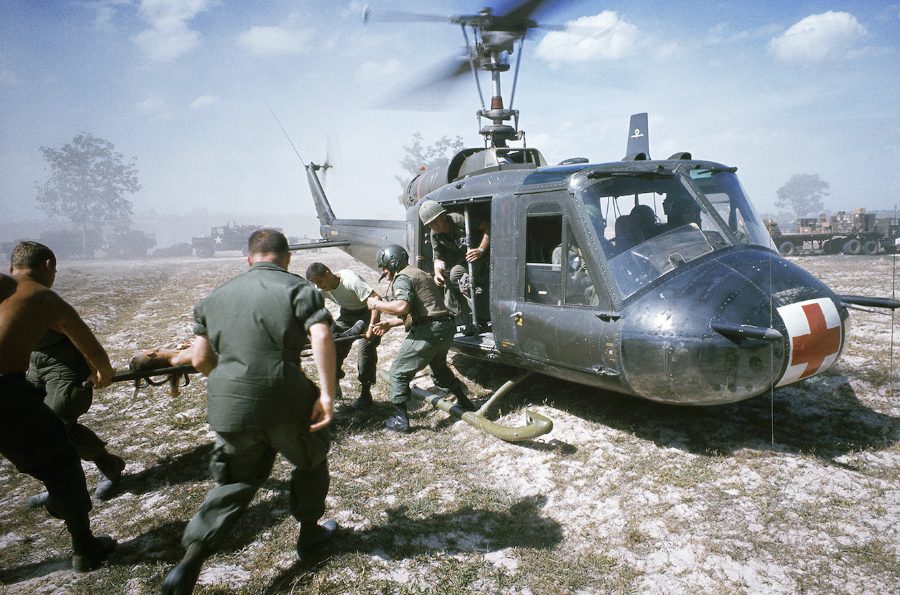
On 22 August 1970, ten days after I had arrived in Vietnam, A Troop, 3rd Squadron, 4th Cavalry Regiment to which I was newly assigned left base camp for six weeks of combat operations. Our primary job was to conduct “search and destroy” operations to find and battle with the Viet Cong. In practice, we also performed other missions such as providing security for logistics convoys and serving as a quick reaction force for other units in the field. Each platoon had an area each day that they were responsible for searching for signs of enemy operations or encampments. Mostly, we conducted these operations riding in our M113 Armored Personnel Carriers and Sheridan Light Tanks, but occasionally when the terrain did not allow, we dismounted and conducted short patrols. Because the American role in war was coming to an end, the enlisted men often called these “search and avoid” operations. With some significant exceptions, most soldiers preferred to leave the enemy alone and return home free of battle scars. Officers and career noncommissioned officers, on the other hand, were expected to be aggressive in making contact with the enemy, and therefore were frequently at odds with those they led.
My first night in the field, the troop commander elected to have the entire troop encamped at one location. Maybe because I was the new lieutenant, he directed that I lead a dismounted ambush about three hundred meters east of our location along a creek bank. Following my Ranger training, I picked six platoon soldiers, gave them instructions for the operation, and inspected to make sure everyone had sufficient ammunition and grenades. I had ordered one soldier to bring a Claymore mine, an essential weapon for small ambushes during the Vietnam War. The Claymore mine when activated, sent dozens of steel balls flying at high-speed, disrupting the enemy formation, and killing or wounding everything in its path.
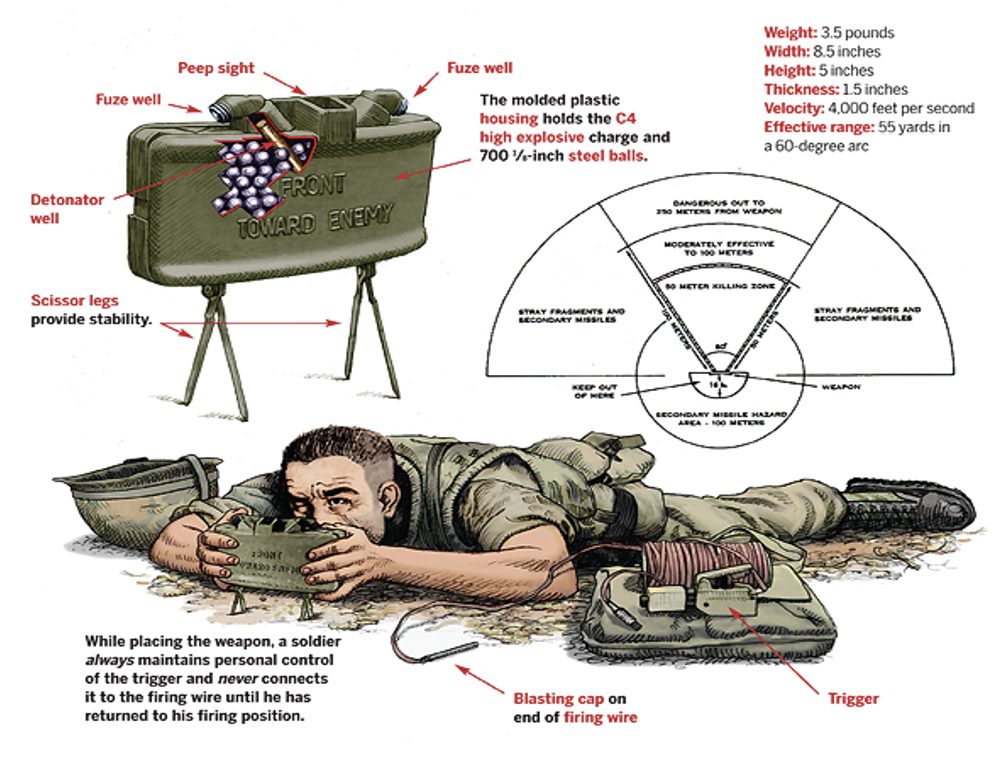
We left for our ambush site at sunset, arrived and began setting up our position. At that time, the soldier with the Claymore and I went forward to place it in position. It was then that I discovered that the carrying pouch for our Claymore did not include a trigger or activating device. This device is connected to the Claymore by a long electrical wire, and without it, the Claymore is useless. I had to decide whether to spend my first ambush without Claymore protection or go back to the troop night position and get the firing device. I chose the latter, and so one of the men and I hastened back in the near dark. I had called on the radio to alert those on guard at the troop night position that we were coming, but it was still a risky path to take. Any of the guards that had not gotten the word could have mistaken us for the enemy as we pushed our way through the neck high elephant grass. That would have quickly ended my first day in the field. As it turned out, we got the device, made it back to the ambush site, and spent a rainy and miserable night without any enemy contact. In hindsight, it was clearly a “green Lieutenant” decision to go back after that firing device. In the next 12 months, I would experience too many incidents in which American soldiers mistook their own as the enemy under similar situations, resulting in “friendly fire” casualties.
The following week we were conducting platoon operations when I heard a loud explosion in the distance. Voices suddenly begin crackling on the troop command radio net. “Alpha 26, this is Alpha 6. What was that explosion?” After a long pause, Steve, the second platoon leader, responded in an unintelligible, mumbling voice. As the troop commander asked him to “say again last transmission,” we heard shots fired in short bursts from what sounded like an US Army M16 rifle. After another long pause, Steve, breathing heavily, finally responded. “Alpha 6, this is Alpha 26, Three of my men and the scout dog went down a trail a few minutes ago. I heard a loud explosion. I don’t know what happened.” The troop commander immediately responded in a firm voice, “This is Alpha 6. Dismount and take a squad down that trail and report back to me on what you find”. Everyone on the command net waited anxiously for a response but it didn’t come. The troop commander called again, “Alpha 26, do you Roger?” Again, there was silence, and after a long pause, I heard the troop commander in an agitated voice calling the platoon sergeant who was second in command “Alpha 24, Take a squad and go down that trail yourself and do it NOW.” The platoon sergeant immediately responded, “Roger Alpha 6”. A short while later, the platoon sergeant reported that he had found the patrol. It appeared that the scout dog had hit a tripwire, detonating an enemy mine. The explosion had killed the dog and handler and one of our infantrymen. The third soldier who had been firing his M-16 to get our attention was mortally wounded. I expected that my fellow platoon leader would be relieved of his duties, but he wasn’t. Like me, he had only been in the field a few weeks, and this was his first exposure to combat. My very experienced troop commander apparently took this into consideration as he made no changes in the platoon leadership. It gave me some assurance that at least with my current boss, mistakes were allowed. I never learned what really happened that day as neither Steve nor my troop commander every spoke of it. Except for the loss of life, it was as if it had never happened.
On 4 September, only my second week in the field, I was leading a platoon reconnaissance operation with our M113 track vehicles. Mines were the primary danger in Vietnam by that time in the war. Consequently, our practice was to fill the bottom of our vehicles with boxes of ammunition and other gear in the hopes this extra material would provide additional protection against a large blast. This left little room inside the vehicle for all the crew, so most armored troop carriers had two or three soldiers riding on the top deck. In my unit, a canvas seat had been welded on the left rear of my command track for me to sit and control the platoon. Sitting next to me, I had a fire support coordinator, a sergeant, whose job was to call for artillery fire, when necessary.
We were moving in a wedge formation along high ground marked by a path used by Vietnamese farmers to get from the rice paddies back to their village. I had my command track straddling the path to stay in the middle of the formation. I noticed a small tree about 8 feet high along the trail. My driver, not wanting to run over the tree, steered right to go around it. When he did, the left rear of the vehicle where I was sitting moved over the path, and there was a massive explosion. My next memory was lying on the ground on my back, unable to sit up because of the pain. Concerned that we were being ambushed, I reached around trying to find my rifle when several of my men ran up to give me aid. As I lay there, I saw that the entire left rear of my command track was missing. I would later learn that we had run over a large mine and that my artillery coordinator had been blown in the air and had landed on top of the armored vehicle, breaking his arm. I had apparently been catapulted into the air and had landed several feet from the vehicle on my back. A medical helicopter evacuated me to a field hospital, where an x-ray showed that my pelvis was slightly dislocated. My medical records recorded it as a compression fracture of my lower spine. That was just one of my painful injuries, as every part of my body hurt. The energy from the explosion that had severely damaged the vehicle had also passed through my body, with the concussion bruising every muscle.
The doctor decided I would not require hospitalization as I had no broken bones or open wounds. Instead, I would remain in the field hospital until I could walk. To this day, I remember him directing two orderlies to put my arms over their shoulders and carry me to a patient bunker. As I got off that X-ray table, the pain was tremendous, and I screamed at the top of my lungs for them to “go easy.” They assisted me to a heavily sandbagged bunker. It was a field hospital and there were no nurses or medical beds, only medics to care for the few patients there
The only pain medication the Army had at the time was Darvon, which was not much more potent than extra strength aspirin today. It was excruciatingly painful for me to go to the bathroom or sit up or even eat my meals. I lay in bed for three days before I could walk. I was flown by helicopter back to our base camp at Cu Chi, where I recovered for another two days before catching a resupply helicopter back to the field. As I limped slowly from the aircraft toward the encampment, one of the senior Troop NCOs stared at me, not saying a word. His expression said it all; “Welcome to the Vietnam War Lieutenant.” My pelvis was so sore that for the next few weeks, I could not sit down. Instead, I stood- in the cargo hatch of my vehicle as we maneuvered across the rough terrain, causing more bruises to my ribs. The artillery sergeant and I would receive Purple Hearts in November, but we both would have preferred to have been spared this award.
The same week I was wounded, my classmate and fellow Armor Officer Hank Schroeder, who I had just served with at Fort Riley, would suffer devastating wounds from multiple mines while trying to aid his injured tank crewmen. He would be awarded the Silver Star and spend two painful years in Walter Reed Hospital. Hank and I would serve together again at Fort Knox, and despite his significant physical handicaps resulting from his wounds, he would complete an eighteen-year Army career before being medically retired. Four years after retirement, exactly twenty-one years to the month after he was wounded in Vietnam, those wounds would finally take his life.
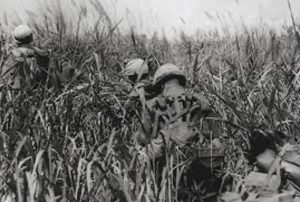
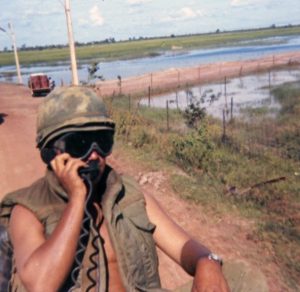
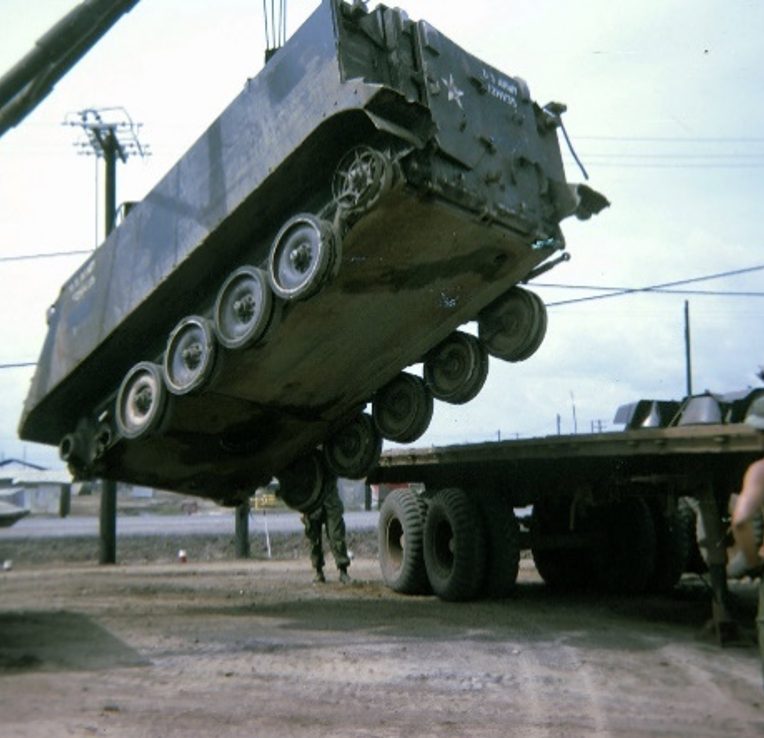
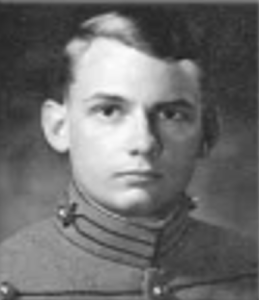
Dear John:
Thanks for your fascinating story to begin Vets Day 2022. Thanks also for the tribute to classmate Hank Schroeder.
Best regards & BOTL,
Bill Bahr
Hank endured some incredible hardships but always stayed positive and devoted to the Army. Besides his disabilities he also lost his fiancée in a car accident. We were company commanders in the same AIT Brigade at Ft Knox and he was a great example for all the officers in the unit. I was very proud having him as a classmate .
John,
A gripping story and a nice tribute to Hank as well. Those were hard times. Glad you came through it all right.
Thanks for sharing your experiences.
Jim
John, quite a sobering story. Fortunately, you survived. From the glass is half-full perspective, it could have been worse. Glad it wasn’t..
Thanks for sharing your experience and for your service.
Thanks, John. I could relate to much of what you wrote. Patrolling in chest high elephant grass and the ever-present danger of mines or booby traps brought back vivid memories. Thanks for posting.
John, As I happen to mention to you just three days ago, you are great writer. You did it again. Thanks for sharing.
Wonderful story on this historic and sacred day.
John, great story, as always. Reminded me of my time commanding C Troop, 1/1 Cav in the 23rd Division. Saw my 250 lb. NCO blown off his track just a head of me by a mine. He refused to wear a 45. After getting separated from his M 16 while in the air, he wore a 45 after that. Bet you were as good a platoon leader as you were a roommate .
Bib
Hank Schroeder endured some incredible hardships but always stayed positive and devoted to the Army. Besides his disabilities he also lost his fiancée in a car accident. We were company commanders in the same AIT Brigade at Ft Knox and he was a great example for all the officers in the unit. I was very proud having him as a classmate .
John, after our 1st Reg golf outing in FL this past week, I realize you would be a “scratch golfer” if not for your combat injuries. BTW, as CO of C Co 1/12 CAV, I personally subscribed to the “search and avoid” thinking. While on patrols, whenever we even suspected VC ahead, I immediately called in the Cobra Gunships, popped smoke, and watched the awesome show as these skillful pilots decimated the path ahead with rockets and flechette rounds. We did lose one scout dog and suffered 5 wounded during my time, but no KIAs.
I agree with your “avoid” approach Gary. The VC knew the Americans were going home soon so they avoided contact, preferring to let mines, booby traps, and occasionally mortars do the work for them. Over the five months I was a platoon leader we had three killed and over a dozen wounded including myself but seldom had the opportunity to engage the enemy.
John, thanks for your story. Every time I read one of these accounts by our classmates I am proud to have been a member of the BOTL. I’m glad you came home in one piece … even if you didn’t end up on the pro golf tour!